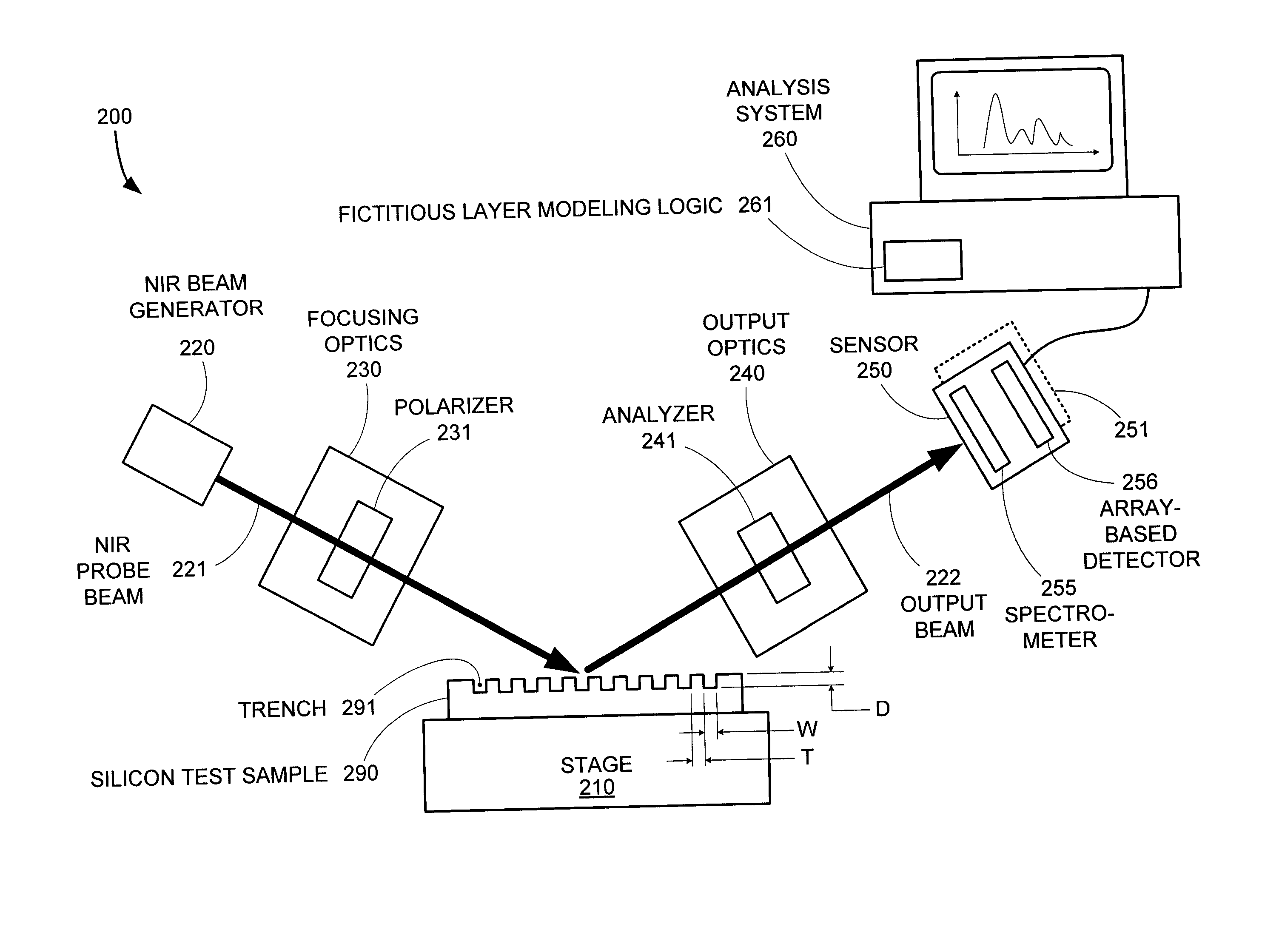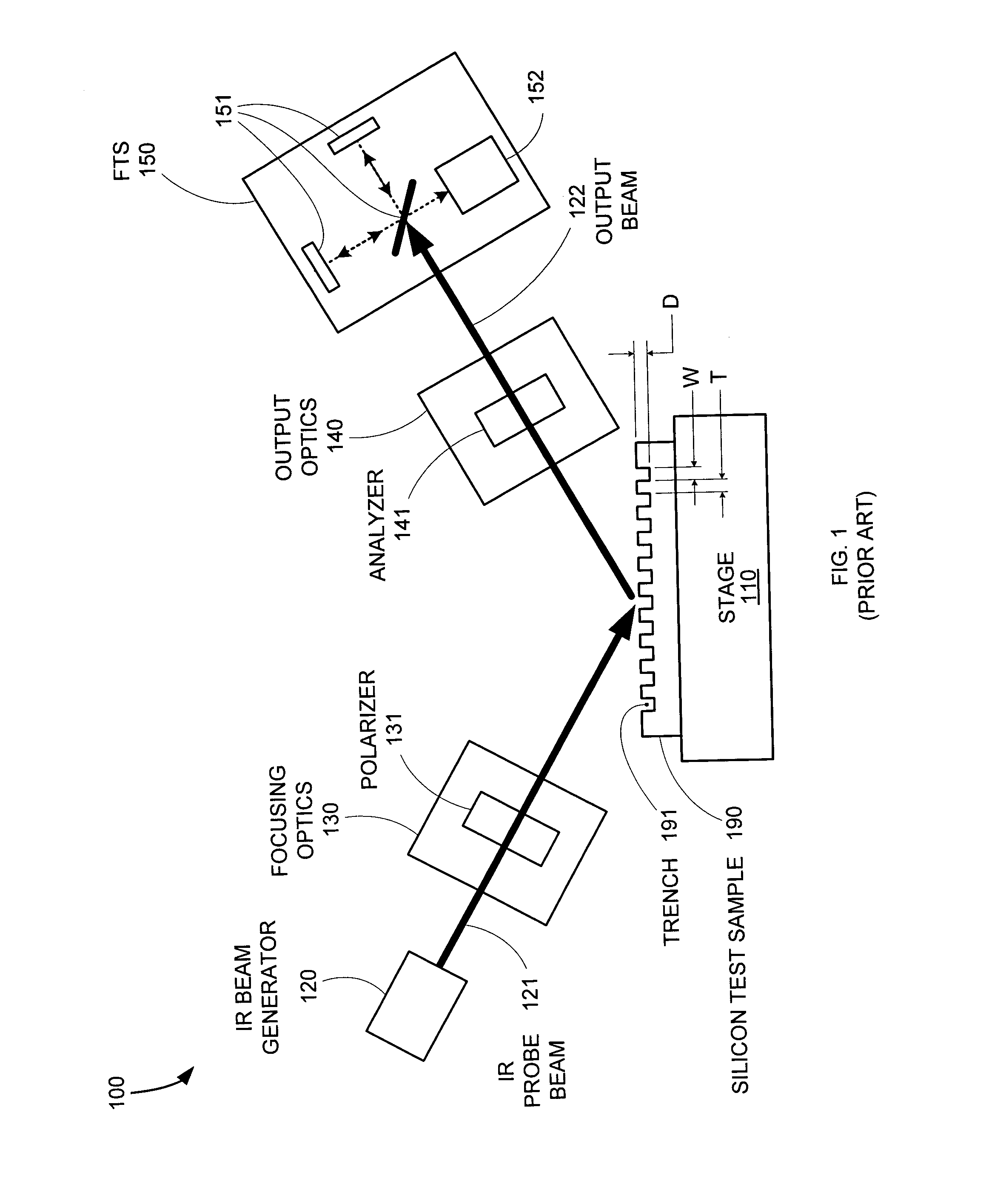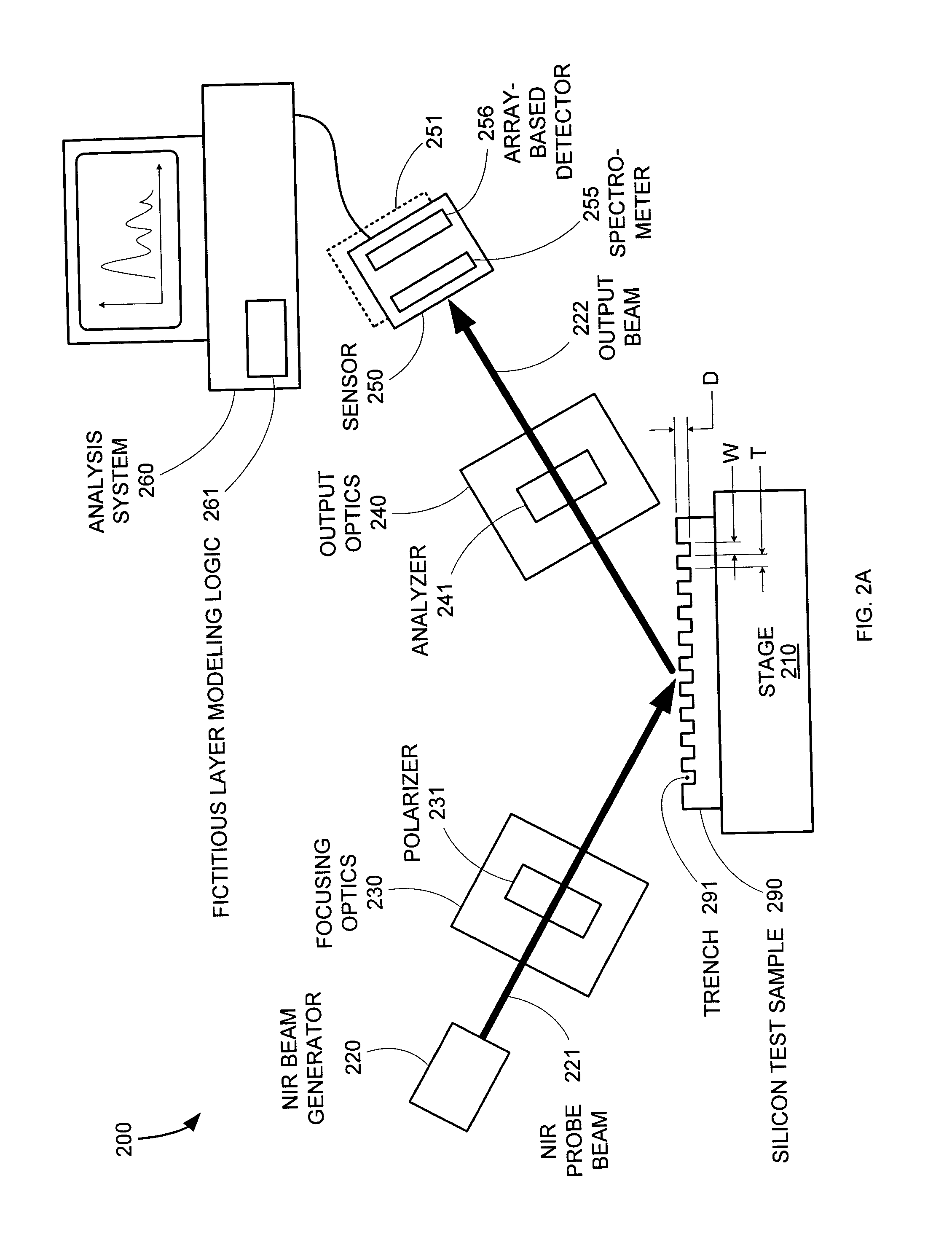Method and system for measuring deep trenches in silicon
a technology of silicon trenches and trenches, applied in the field of silicon metrology, can solve the problems of the cost and delicateness of the components required by such systems, and reducing the practical utility of an ir spectroscopic ellipsometry system
- Summary
- Abstract
- Description
- Claims
- Application Information
AI Technical Summary
Benefits of technology
Problems solved by technology
Method used
Image
Examples
Embodiment Construction
[0021]Conventional IR spectroscopic ellipsometry systems provide a means for measuring the characteristics of trenches in silicon that would be difficult to otherwise determine. However, the IR handling components required by such systems are expensive and delicate, and can therefore reduce the practical utility of an IR spectroscopic ellipsometry system. By performing spectroscopic ellipsometry using a probe beam in the near IR (NIR) range, the metrology capabilities of IR spectroscopic ellipsometry can be provided without the need for the costly and fragile IR-compatible components required by conventional IR spectroscopic ellipsometry systems.
[0022]FIG. 2A shows a NIR spectroscopic ellipsometry system 200 for analyzing a silicon test sample 290. NIR spectroscopic ellipsometry system 200 includes a stage 210, a NIR beam generator 220, focusing optics 230, output optics 240, a sensor 250, and an analysis system 260. Test sample 290, which is supported by stage 210, includes an arra...
PUM
 Login to View More
Login to View More Abstract
Description
Claims
Application Information
 Login to View More
Login to View More - R&D
- Intellectual Property
- Life Sciences
- Materials
- Tech Scout
- Unparalleled Data Quality
- Higher Quality Content
- 60% Fewer Hallucinations
Browse by: Latest US Patents, China's latest patents, Technical Efficacy Thesaurus, Application Domain, Technology Topic, Popular Technical Reports.
© 2025 PatSnap. All rights reserved.Legal|Privacy policy|Modern Slavery Act Transparency Statement|Sitemap|About US| Contact US: help@patsnap.com



